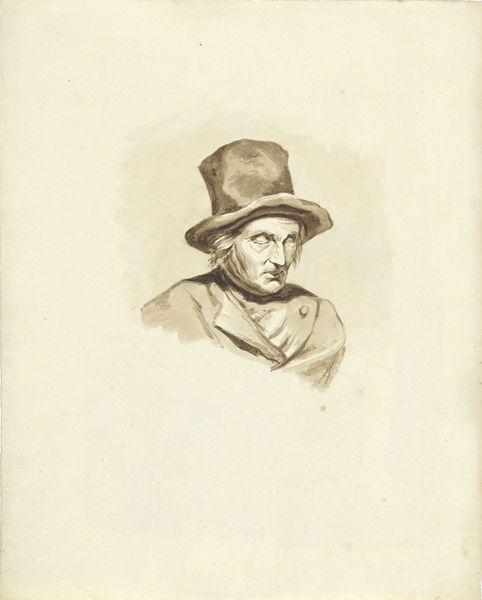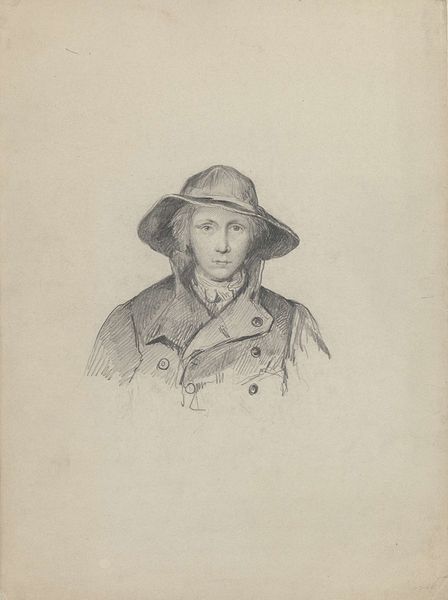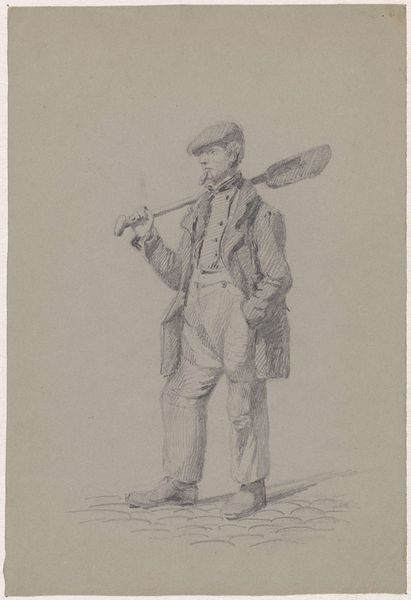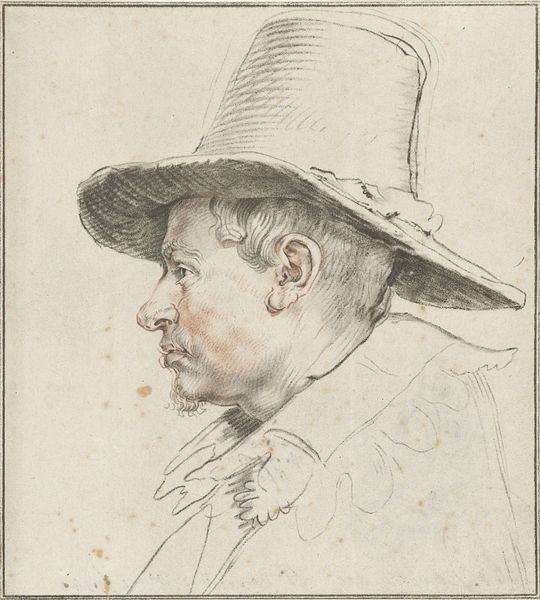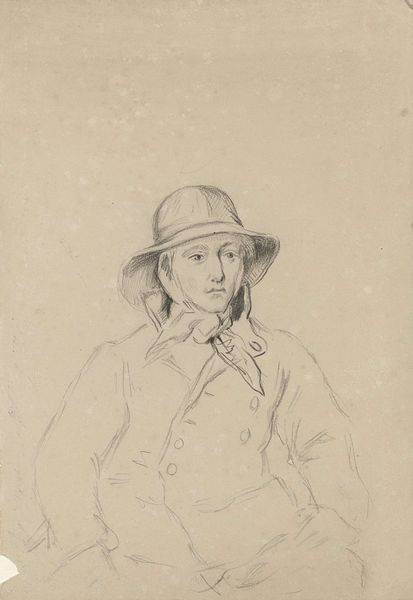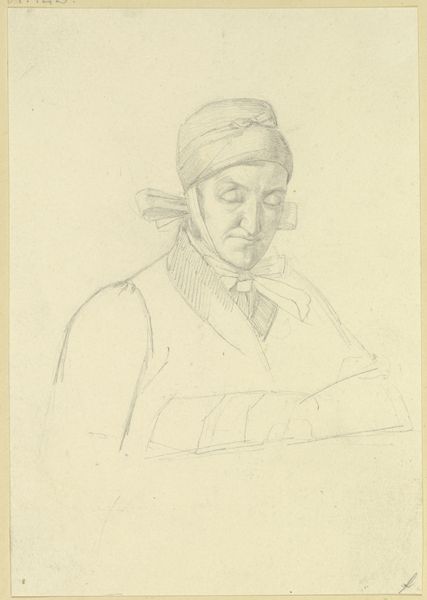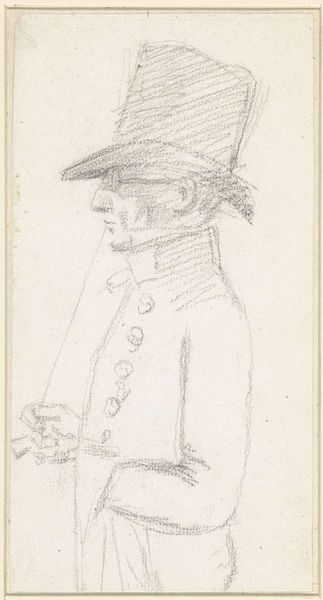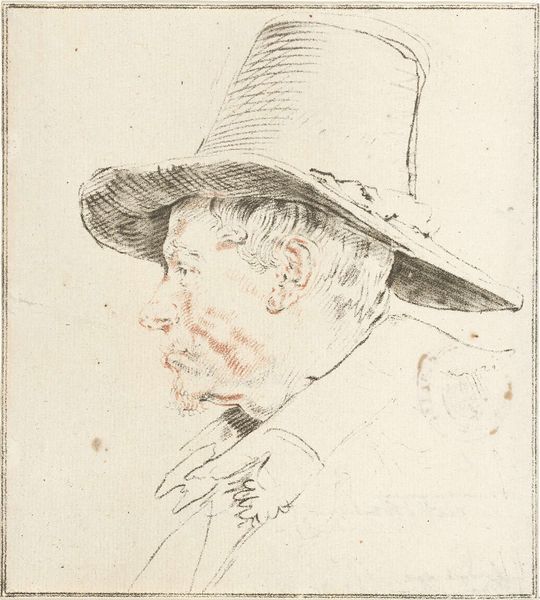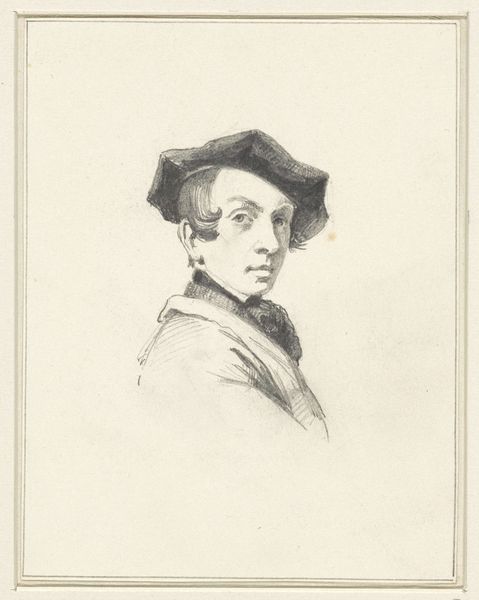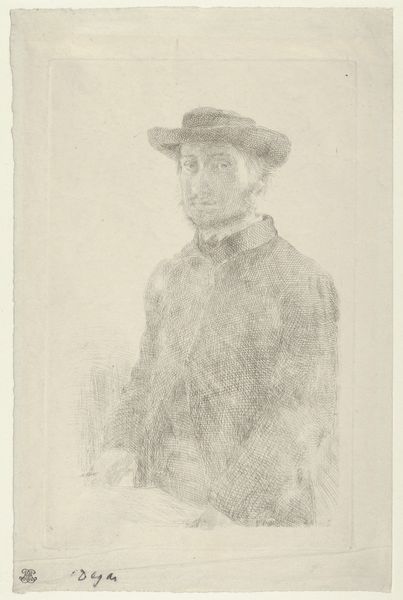
drawing, pencil
#
portrait
#
pencil drawn
#
drawing
#
amateur sketch
#
light pencil work
#
pencil sketch
#
personal sketchbook
#
portrait reference
#
idea generation sketch
#
pencil drawing
#
romanticism
#
pencil
#
portrait drawing
#
pencil work
#
realism
Dimensions: height 338 mm, width 230 mm
Copyright: Rijks Museum: Open Domain
Editor: So, this is "Portret van Klaas Bording" from 1849, made with pencil. There's a gentle quality to it. What's striking to me is how informal it feels, almost like a sketch from life. What do you see in it? Curator: What I see is a visual document rooted in a specific social context. This portrait, while seemingly straightforward, is an opportunity to delve into the identity and the potential politics surrounding its creation. This era saw increasing interest in depicting individuals from various social strata, though through whose eyes and for what purposes? Editor: That’s a great point, the sitter's clothes could tell a story about class. Was art becoming more democratic? Curator: Precisely. And think about the choices inherent in creating a portrait like this. Who was Klaas Bording? What was his relationship to the artist? Was he from a marginalized group? The seeming simplicity invites deeper questions about representation, power, and visibility. Editor: So, we need to consider what was going on at the time in society. Were there discussions of class and representation that might have influenced this piece? Curator: Absolutely. Consider also the visual language: the soft lines, the direct gaze. How do those elements work to either reinforce or subvert the power dynamics inherent in portraiture? Who has access to art? Editor: It's like you're reading it as a conversation between the artist and society. Curator: Indeed. And it's a conversation that continues today. By situating this artwork within those historical and social frameworks, we can draw meaningful connections to contemporary dialogues around identity and representation. Editor: I’m definitely seeing this sketch in a different, richer way now! Curator: And hopefully, a more critical one! It encourages us to challenge assumptions and see beyond the surface of artistic representation.
Comments
No comments
Be the first to comment and join the conversation on the ultimate creative platform.
